The 1960s was a time of great change. This was the time of the Civil Rights Movement, a time when President Kennedy was assassinated, a time when the Vietnam War began, and all of this was just in America. The United States was drawn into the worldwide spotlight. This was also a time of great change in the automotive industry. Fresh new cars were introduced with sleek styles and brand-new markets were dreamed up. Muscle cars, pony cars, personal luxury vehicles… None of those existed before the ‘60s.
Updated April 2022: We can never get enough of cool classic cars, and since so many of them are getting resurrected nowadays we thought it’d be worth updating this one to remind everyone of where they came from!
There are a few cars that came about in the ‘60s that are iconic in more than just the car world — cars that even non-car people would recognize — like the Ford Mustang and Chevrolet Corvette. Some of these cars were made famous by appearing in films, like the Lamborghini Miura, the Aston Martin DB5, and the Toyota 2000GT. Others were made famous by appearing in races across the world and winning them. New engines were being introduced; new designs were made; competition in the automotive world soared.
This was an explosive and exciting time for the car industry. Hundreds of car designs were shown, but many of them died out without making a blip on the radar. Only a select few can really be considered “cars that defined an era.” We think we’ve thought up and put to paper 20 such cars — cars that defined the ‘60s in one way or another, and here they are.
23 Rolls-Royce Silver Shadow
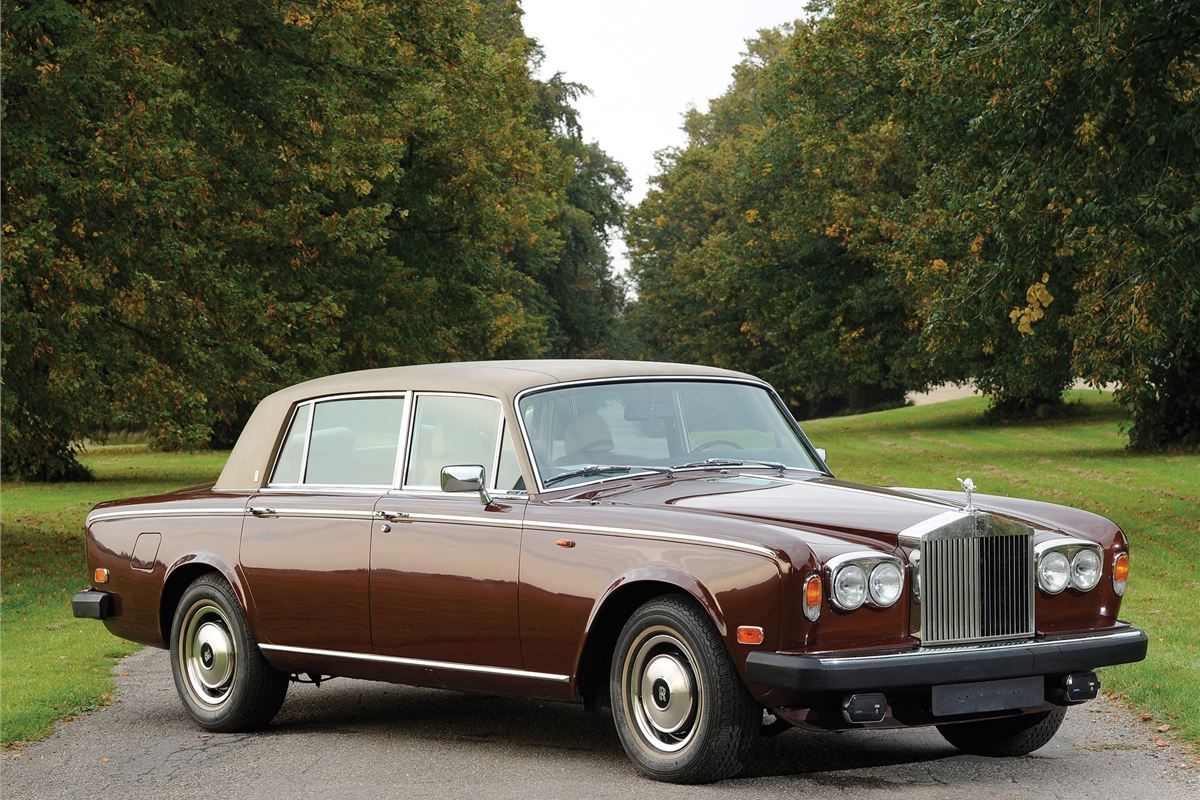
It’s not often that lists containing the greatest cars of a certain time frame include luxury cars, but Rolls-Royce defined what a luxury car can be when they introduced the Silver Shadow in 1965. Even its name alone was something to behold. It featured hydropneumatic rear suspension like in the Citroën DS, split-level air-conditioning, and electric-adjustable seats. But it wasn’t just the interior that boasted some ground-breaking highlights; underneath its hood was a 172-hp 6.2-liter V8 that was more than adequate to accelerate its 4,650-lb body without being ear-shattering loud. Before production halted in 1980, more than 28,000 Silver Shadows left the factory floor despite it costing nearly $70,000.
22 Alpine A110
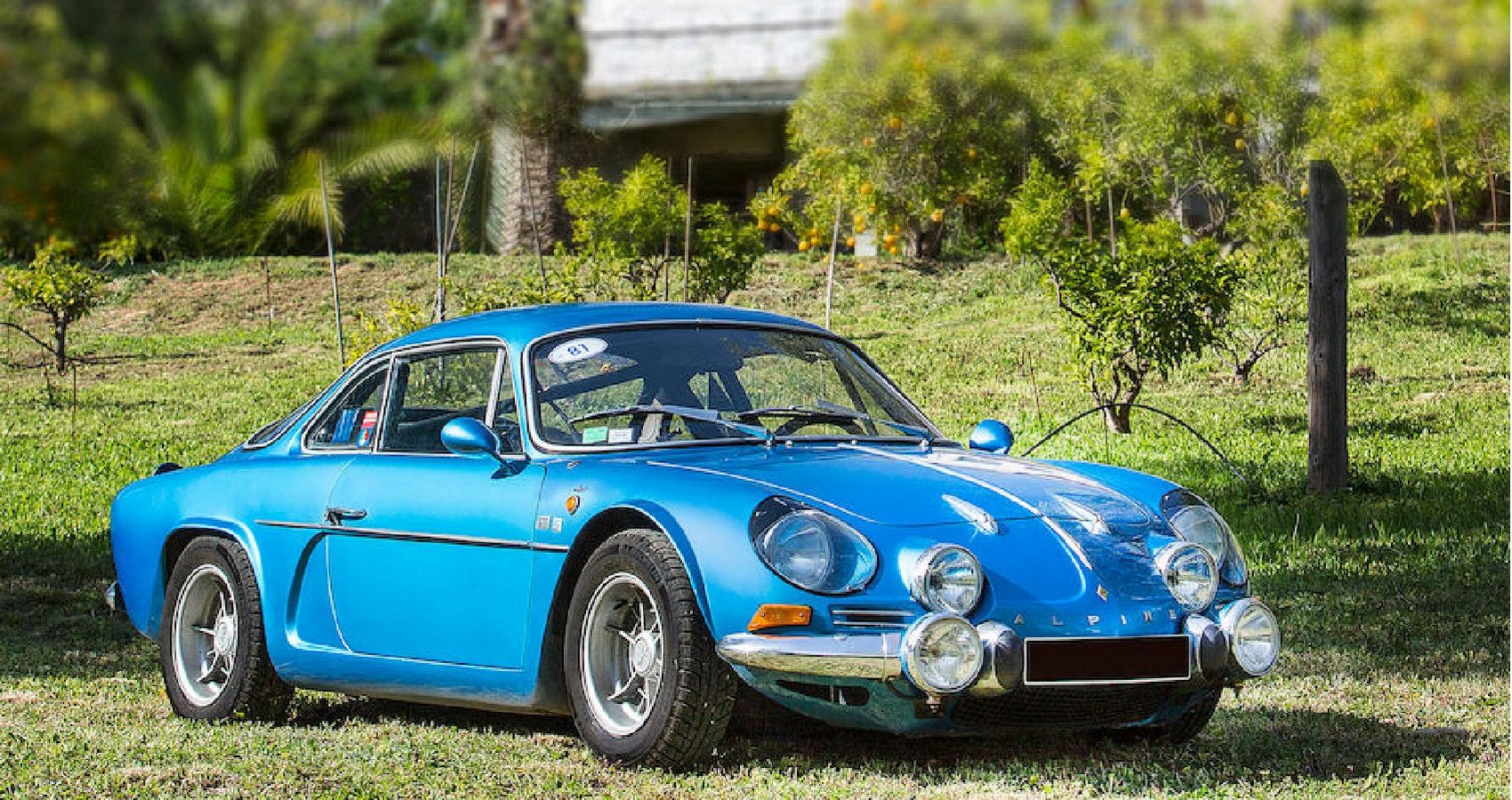
The Alpine A110 was a gorgeous rear-engined lightweight sports car that was equally impressive on- and off-road. It weighed less than 1,600 lbs, and because it had a potent little inline-four engine strapped to its back that produced nearly 140 hp, and sent it all to just the rear wheels. Therefore, this little French sports car liked to swing its tail around corners like an overly-excited dog. Its light weight was the result of a fiberglass body, and its body roll was disintegrated due to its backbone chassis. The Alpine A110 proceeded to win 6 WRC events in just a single year, 1973. The Alpine has been revived in 2017, and it’s still everything it was back in the day, maybe even more.
21 Datsun 240Z
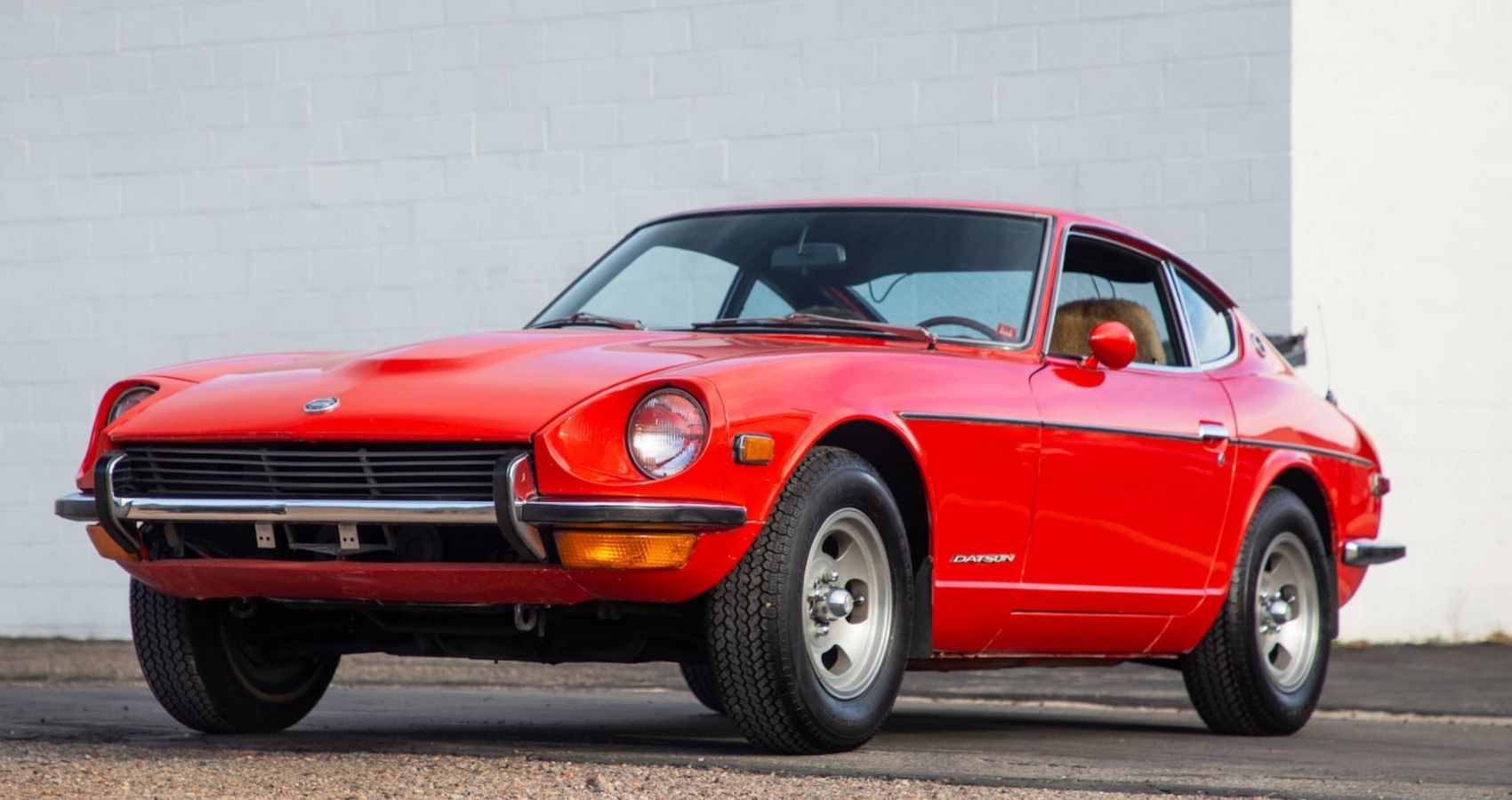
With the new Nissan Z’s release on the horizon, car enthusiasts are starting to reminisce about all the past Z cars, and the 240Z was the one that started it all. Yes, we know it doesn’t necessarily have the Nissan badge attached to its name, but Datsun was the original creator of the Z-division before Nissan took over. The 240Z engulfed a 2.4-liter inline-six engine, much like the modern Z cars, and used all 150 hp at its disposal by conducting it through a 5-speed stickshift to the rear wheels. The Z wasn’t unbelievably fast, but it did have a respectable 125 mph top speed and 8-second 0-60 time. Nonetheless, it’s still one of the most iconic JDM cars ever, and Nissan would not be what it is today without it.
20 BMC Mini
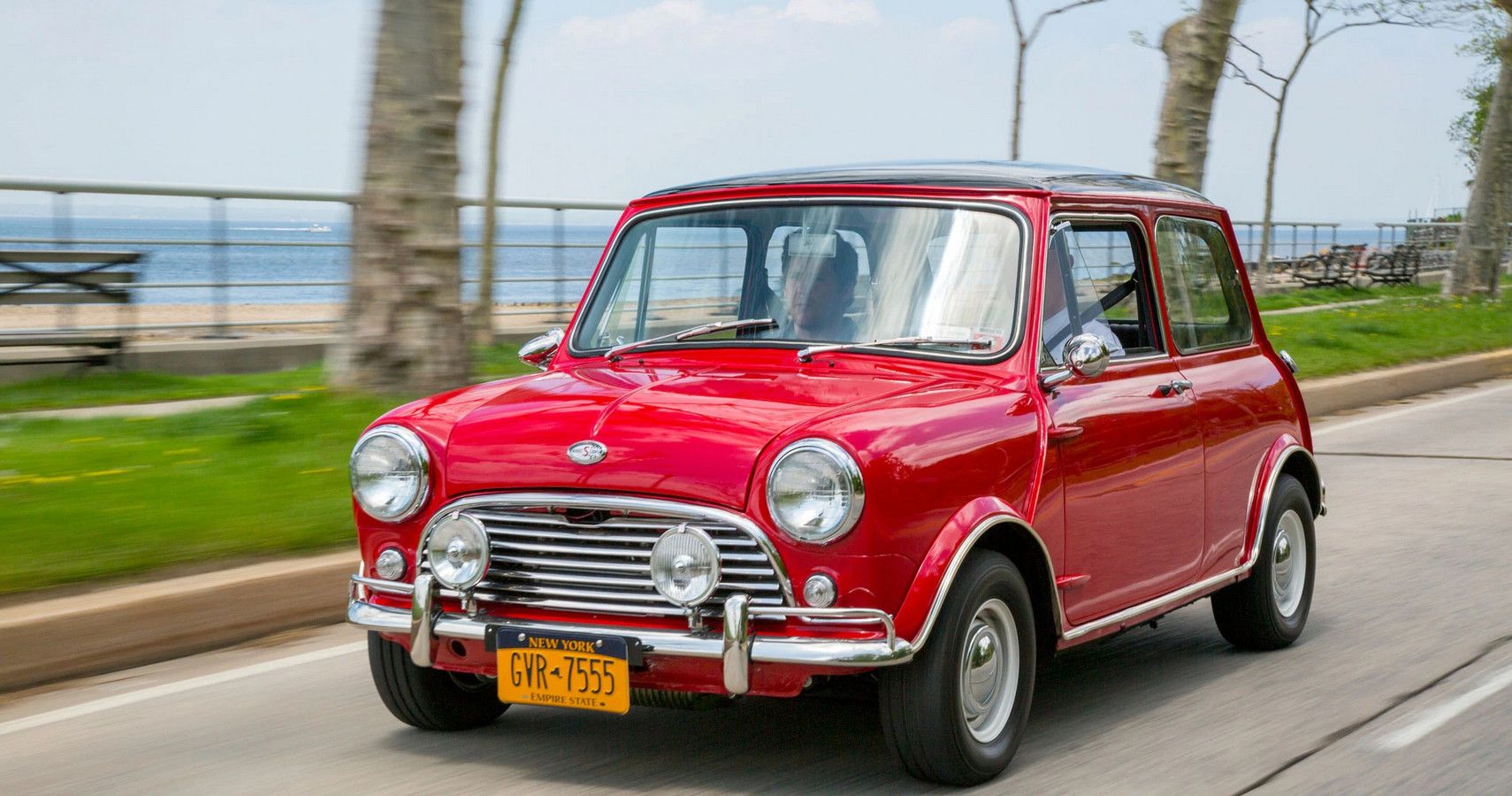
The Mini was one of the first tiny cars that gained huge popularity throughout the ‘60s. The car was designed by the British Motor Corporation (BMC) and was considered an icon of 1960s British pop culture. As much as any other car on this list, the Mini defined the era in question. The car had a space-saving transverse engine and front-wheel-drive layout so that almost 80% of the interior could be used for passengers and luggage. This concept influenced a generation of carmakers, too.
In 1999, the Mini was voted the second most influential car of the 20th century by the Global Automotive Elections Foundation, behind only the Model T. The car was designed by Sir Alec Issigonis, and manufactured all over, though primarily in England. The car went through four Marks, or generations, throughout its long life (production from 1959 to 2000). In 1994, BMW acquired the Rover Group (formerly British Leyland) but retained the rights to build the car under the MINI name. By the end of production in 2000, 5,387,862 Minis had been sold worldwide. It only took six years (1965) for the millionth Mini to make its way off the production line. These cars left a lasting impression on everyone who drove them because they were fun, practical for the small British roadways, and reasonably priced.
19 Aston Martin DB5
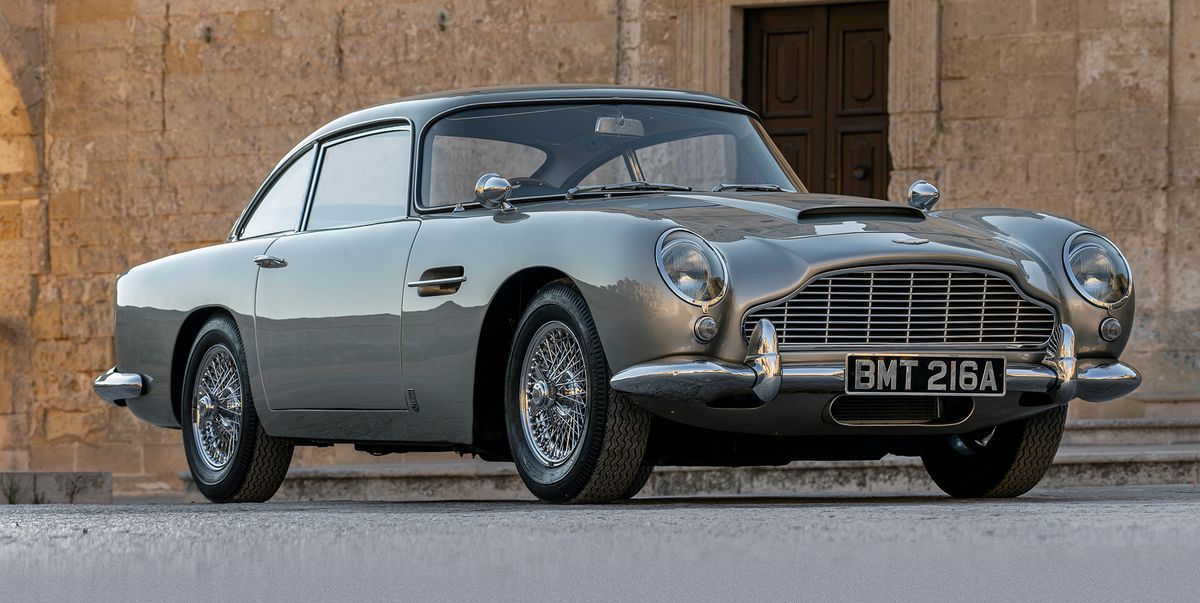
The Aston Martin DB5 is one of the most classic, stylish grand tourers to ever hit the road, and it’s the car that all other grand tourers (GTs) hope to be like. Even when it debuted in 1963, it looked expensive and flashy, arguably as flashy as the over-the-top Mercedes-Benz 300 SL Gullwing.
It had a powerful 4.0-liter 282-hp inline-six engine and came with a 5-speed transmission 20 years before it became commonplace. The DB5 sported lines and classic contours that shaped the car are still seen on Aston Martins today.
Perhaps more than anything, what helped stamp this car as one that defined the 1960s was the fact that it was made world-famous for being James Bond’s car in the 1964 film Goldfinger. Since that film, the car became known as the quintessential car of the James Bond franchise, and it appeared in subsequent films over the years (such as the film following Goldfinger, Thunderball). In 2010, the DB5 that appeared in both Goldfinger and Thunderball was put up for auction by RM Auctions. It was sold for £2.6 million, or £2.912 million with commission, which equals over $4 million in today’s money. For being the car of choice in a film franchise that defined an era, the DB5 deserves to be on this list.
18 Jaguar E-Type
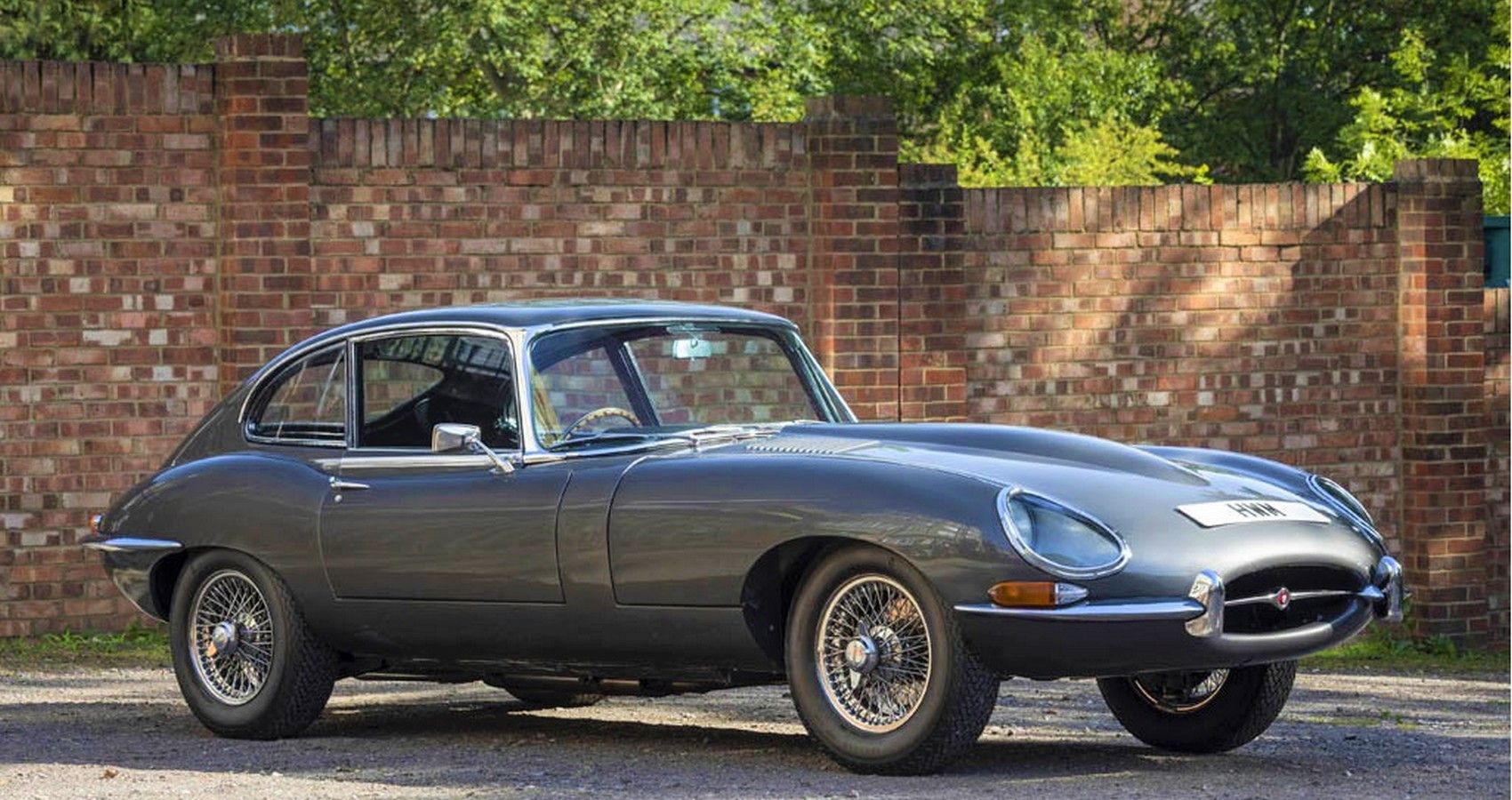
When this car first came out, it was one of the fastest on the road, but it only cost a fraction of other exotics. That made it highly desirable, and what made it even more desirable was when it was called “the most beautiful car I’ve ever seen” by Enzo Ferrari! From 1961 to 1975, the E-Type defined the British sports car. It was stunningly gorgeous, based on a proper racing frame, and the chassis was top-notch. The Series 1 offered two different inline-six engines, including a 3.8-liter with non-synchromesh transmission (1961-64), and a 4.2-liter engine with a fully synchronized transmission (1965-67). The Series 1 was by far the most valuable of the cars, and the 4.2-liter “became the most desirable version of the famous E-Type due to their increased power and usability while retaining the same outward appearance as the earlier cars,” according to Supercars.net.
The engines of these cars gave them 265 hp and a top speed of 150 mph, which was almost unheard of at the time. In 1965, Autocar magazine stated that “In its 4.2 guises, the E-Type is a fast car (the fastest we have ever tested) and offers just about the easiest way to travel quickly by road.” Beautiful, fast, and reasonably priced — three great attributes that made this car a legend.
17 Lamborghini Miura
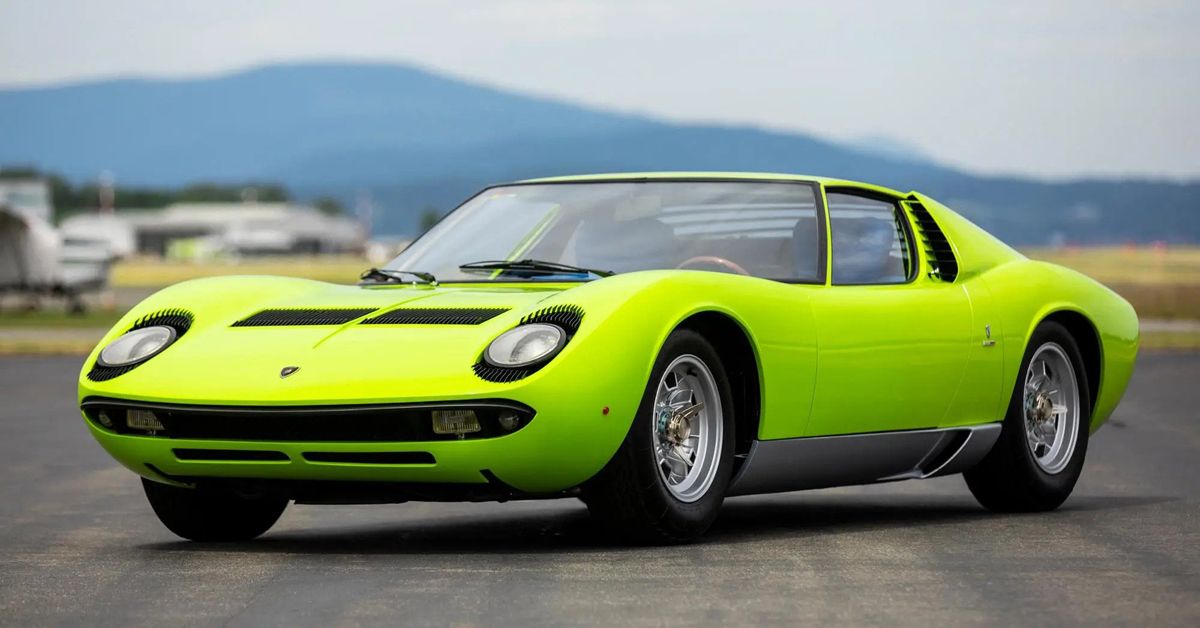
The Lamborghini Miura is considered today to be the first supercar with a rear mid-engined, two-seat layout. That same layout has become the standard for high-performance supercars, and it’s thanks to the Miura. This was the fastest production car on the planet when it came out in 1966.
Surprisingly, founder Ferruccio Lamborghini was not a fan of the Miura. He preferred upscale grand tourers like Lamborghini’s previous 350GT and 400GT. But everyone else loved this car, and it was further made famous by its appearance in the intro of the 1969 film, The Italian Job.
The Miura had sleek racing lines and a purpose-built engine that was a 3.9-liter V12 and produced a remarkable 350 hp. The aerodynamics of the car helped make it the fastest car on the road. The car became the quintessential sports car that celebrities had to own, in its day, from members of the Rat Pack to Rod Stewart. The chassis was designed by Gian Paolo Dallara, who would go on to form his own race car engineering company, one that makes Indy cars to this day. The Miura received periodic updates and remained in production until 1973 when it was Lamborghini’s flagship model. A year later, the extreme Countach was introduced.
16 Ferrari 250 GTO
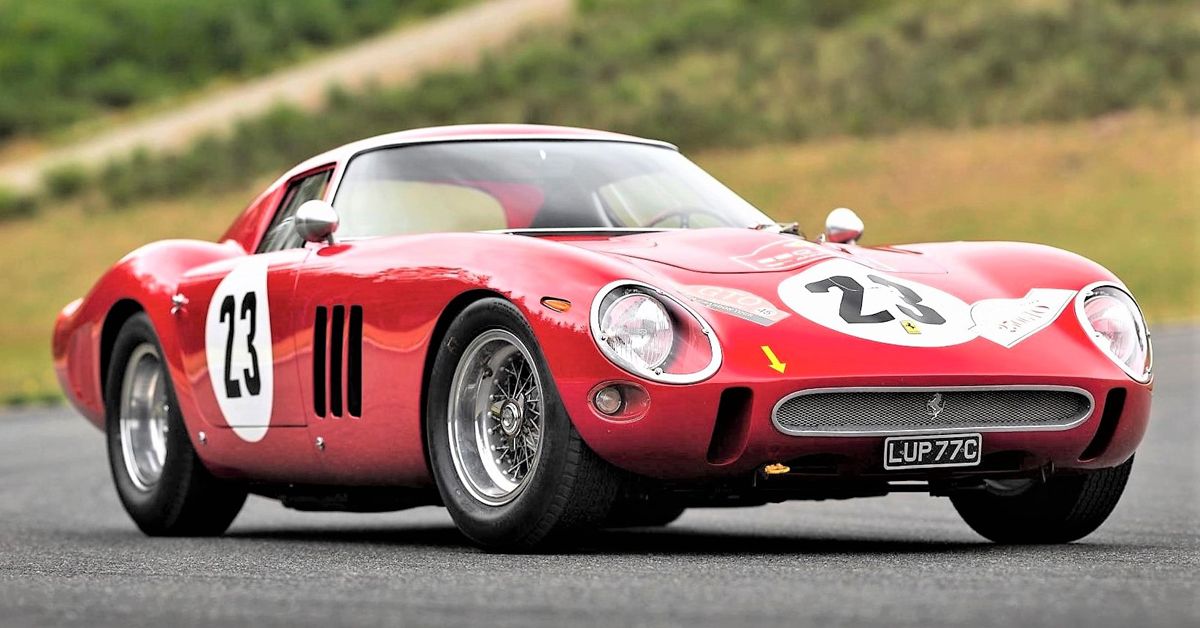
The Ferrari 250 GTO is one of the coolest-looking sports cars on this list (it reminds us a bit of the Jaguar E-Type which might not be a coincidence). It was one of Enzo Ferrari’s earlier designs and was in production from 1962 to 1964. The car sported a 3.0-liter V12 engine, giving it 300 hp, and helping it dominate racetracks around the world. At its release, the car was about twice the price of a Corvette, which wasn’t overly expensive for an exotic car that performed as well as it did. Nowadays, the car is the most expensive on the planet: a recent 250 GTO sold at auction in 2013 for almost $40 million, making it the most expensive car ever sold at auction, until even more recently one sold for $55 million, breaking its own record.
The GTO was one of the most iconic GT cars of the era, introduced for homologation (the approval process to allow a car to race) into the FIA’s Group 3 Grand Touring Car category. In 2004, Sports Car International placed the 250 GTO eighth on a list of the Top Sports Cars of the 1960s, which we think is a bit low. On the other hand, Motor Trend Classic placed the 250 GTO first on its list of “Greatest Ferraris of All Time,” and Popular Mechanics named it the “Hottest Car of All Time.”
15 Porsche 911
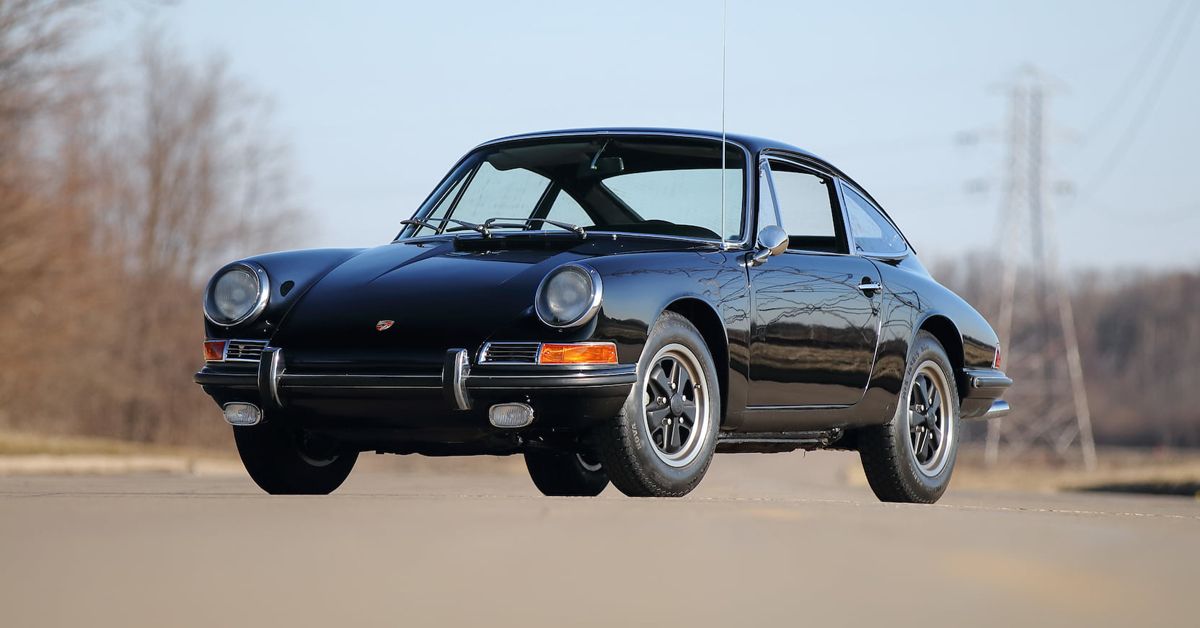
The Porsche 911 was only the second model produced by Ferdinand Porsche, and it was the one that hit pay dirt. Ferdinand was looking for a larger, more powerful car to take over for his first model, the 356. The 911 would go on to become an automotive legend and an icon of automotive technology. The 1964 Porsche 911 was known more for its beauty and great handling than it was for its powerful engine. It ran on a 128-hp flat-six engine, but then it came notoriously with a plethora of options, including Targa tops and gasoline-burning cabin heaters. The 911 Turbo wouldn’t come until the ‘70s, but by that time, the 911 was already legendary.
The car is still in production today, and even though it’s gone through continuous development over the last 55 years, the basic concept for the car has remained the same. It’s always been a rear-engined classic with a rear-mounted boxer engine and all-around independent suspension. A 1999 international poll deciding the Car of the Century (the same one with the Mini) pronounced the 911 fifth. It and the Volkswagen Beetle were the only two cars in the top five that had remained in continuous production until 1998. AS of May 2017, one million 911s have been manufactured, and the one-millionth 911 is proudly on display at the Porsche Museum in Stuttgart, Germany.
14 Ford GT40
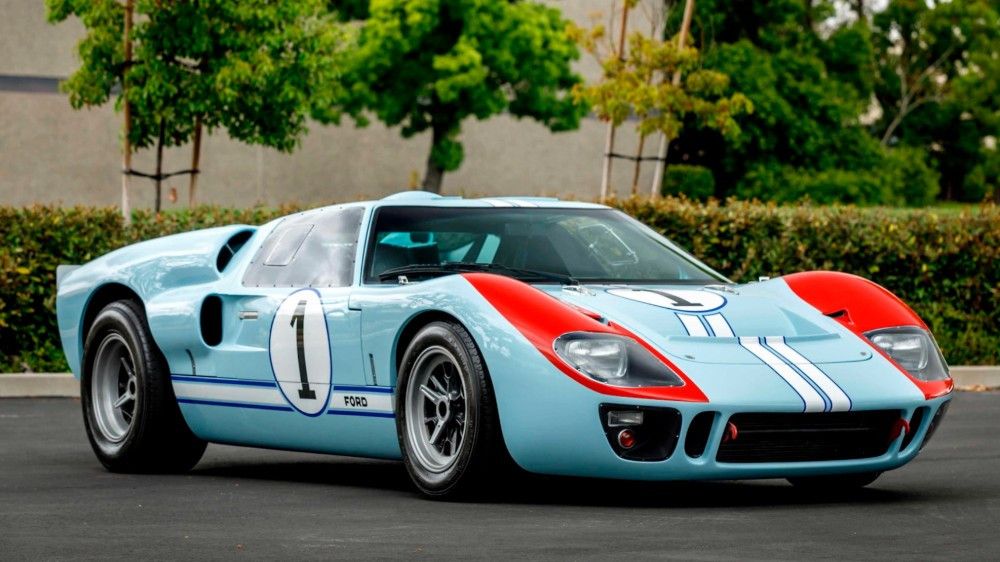
The Ford GT40 was a high-performance race car that was produced between 1964 and 1969. And even though only 105 of them were ever produced, it is still one of the most iconic cars in history, especially in the racing world. The GT40 famously won the 24 Hours of Le Mans for four consecutive years, from 1966 to 1969, instantly cementing its legendary status in automotive history. The 1966 win was the first victory for an American manufacturer at a major European race since 1921.
The GT40 came about when Carroll Shelby was given the reins to design his ultimate car. Henry Ford II, meanwhile, wanted to embarrass Enzo in the top prototype class, but his dream was squashed when his car failed to perform on the track. Once the program was handed over to Shelby, though, the 427 V8 GT40 started beating down all the competition. Here’s how dominant it was: In 1966, the car won not only Le Mans, but also 12 Hours of Sebring, and 24 Hours of Daytona, taking first, second, and third place in all three races. This was truly the most dominant automotive machine of its day. The top speed of this car was around 210 mph, making it the fastest car of the era, and one of the most iconic cars of the ‘60s.
13 Shelby Cobra
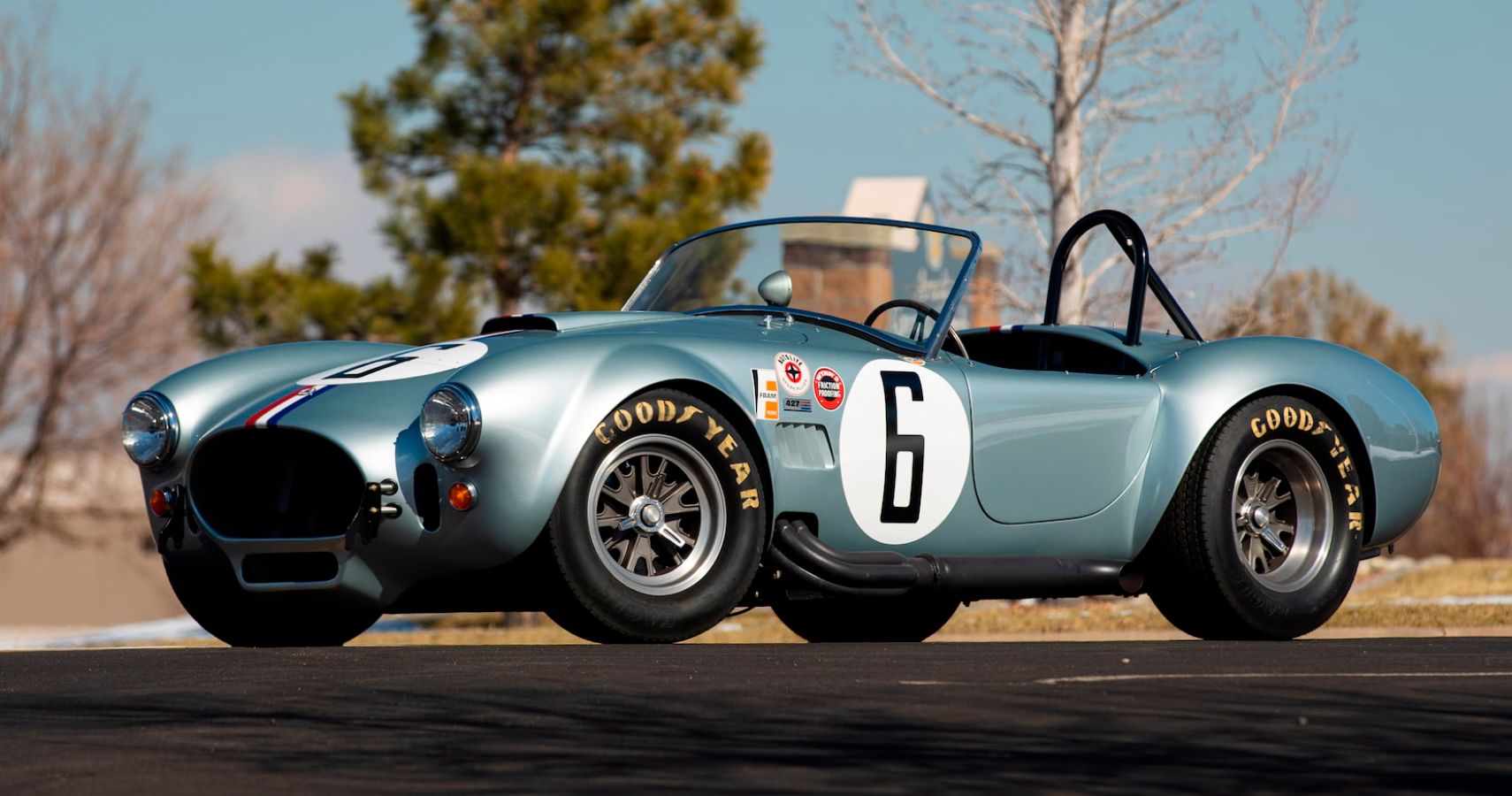
Speaking of Carroll Shelby, the legendary automaker and designer, here we have another model, and one of the coolest inventions in motoring history. The Shelby Cobra came about in a dream, literally. At least the name for it came about in Carroll Shelby’s sleep. The idea was to drop a big American V8 engine into a small British sports car, and the resulting car was instantly ingrained in car culture forever.
Shelby always wanted to make a powerful and lightweight sports car, and for this, he used an AC Ace body and a Ford-sourced V8. The car was sold between 1962 and 1967 and went through multiple updates and upgrades during those five years.
At its most powerful, the Cobra 427 competition model (powered by a “side oiler” 7.0-liter Ford 427 engine) had 485 hp and a top speed of 185 mph, and could reach 0-60 mph in just 4.5 seconds. Since the car is so legendary, Shelby authorized “continuation” cars to be built, and since the late ‘80s cars have been built with the style and appearance of the original ‘60s Cobras, but with modern amenities. In 2014, Shelby America announced a limited production run on 50 cars for the 50th anniversary of the original 427 Shelby Cobra.
12 Chevrolet Corvette
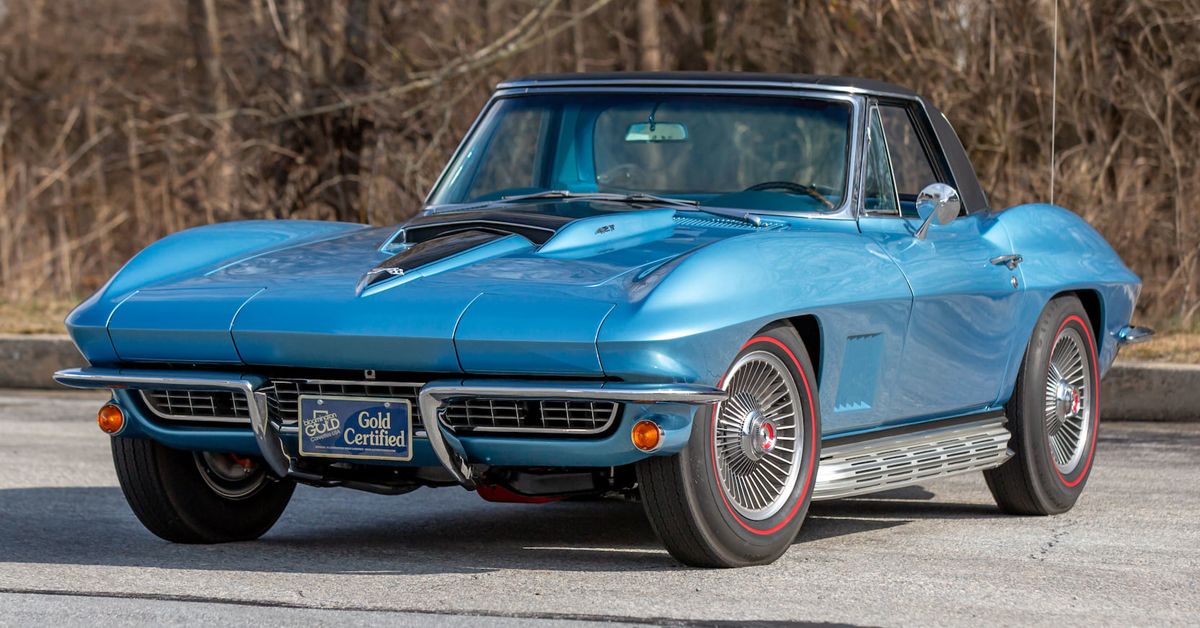
It might be too early to call the Chevy Corvette the most iconic American sports car of all time, as there might be others on this list that’ll give the ‘Vette a run for its money, but it definitely comes close. The C2 second-generation Corvette is generally recognized as the one that defined the ‘60s. Coming off the ‘50s first-generation model, the ’63 Corvette was based on the Mako Shark concept car. The independent rear suspension and big block were introduced in this generation, making it a real fast, tough sports car. Though these cars began selling at affordable prices, these days a big block C2 regularly sells for over six figures.
A couple of different Corvettes of this era were able to give the Shelby Cobra a run for its money: the 427 Sting Ray and the ’63 Split-Window Corvette. These cars continuously pushed the envelope in terms of style and performance, and they have since the second half of the 20th century.
In 1962, Chief Engineer Zora Arkus-Duntov was concerned about Ford and what they were doing with the Cobra. Then he came up with the lightweight C2 version and planned to manufacture 100 Grand Sport Convertibles, though only five were actually built. Today, these five cars (001-005) are owned by private owners and are among the most coveted and valuable Corvettes ever built.
11 Ford Mustang
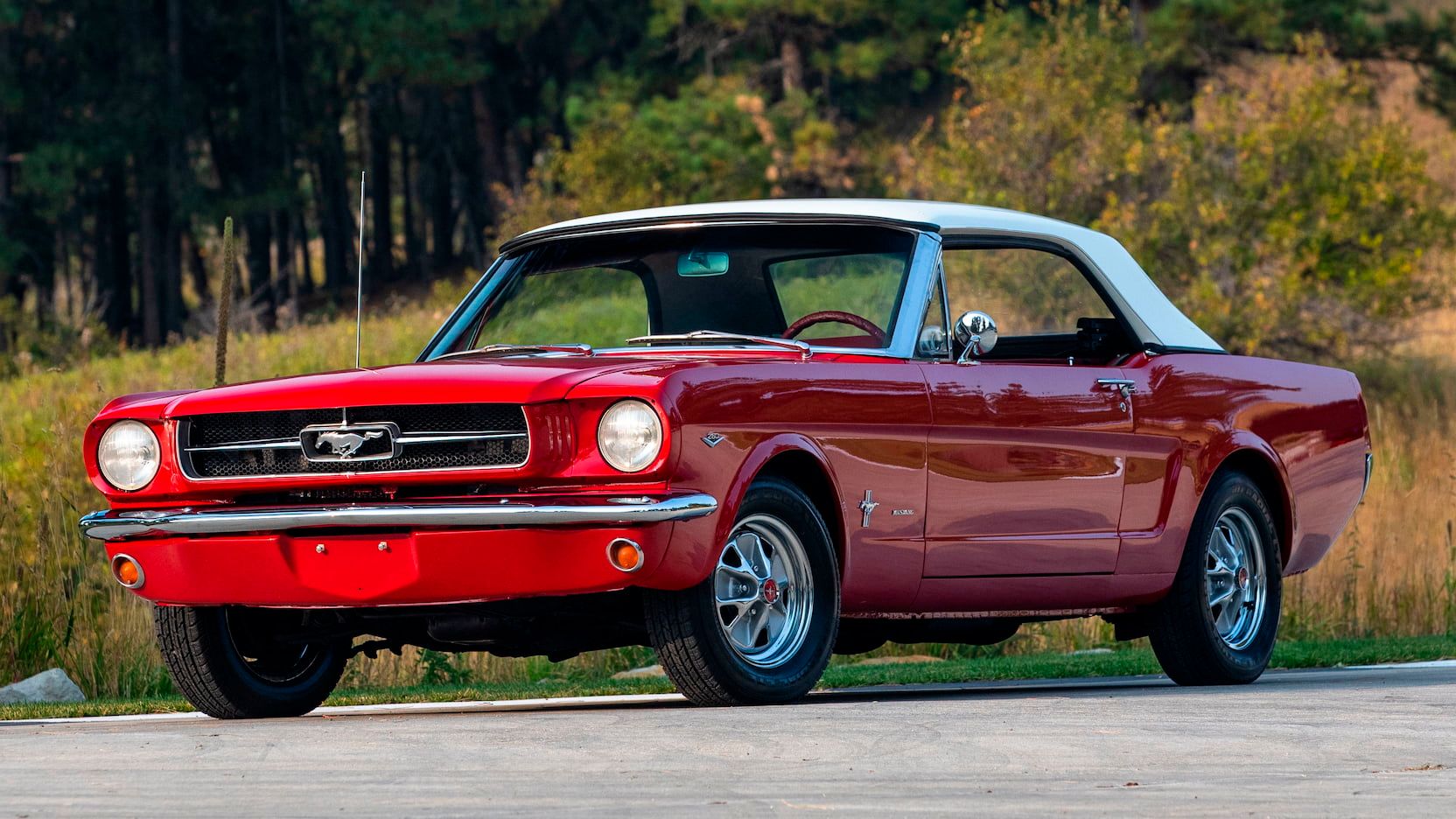
Even more than the Chevrolet Corvette, the single most iconic car in America during the 1960s would have to be the Ford Mustang. The original pony car. The 1964 Mustang started a revolution. It was cheap and really good-looking, and guys (especially) knew that it was the car that was going to get them all the chicks. The original Mustang wasn’t very fast, but a V8 option was offered that showed what the design could do, and later, better V8s and a four-speed transmission made the light Mustang a blast to drive.
The Mustang is so iconic that even non-car people know what the car is. Fastbacks and convertibles and other different body styles were offered for everyone, and even Carroll Shelby got in on the buying craze. The Mustang created its own market and gave rise to competitors like the Chevy Camaro, Pontiac Firebird, Plymouth Barracuda, and Dodge Challenger. Original sales for the car forecast less than 100,000 units moved in the first year, and this milestone was passed within the first three months. 318,000 were sold during the model year — a record — and more than one million Mustangs were built within its first 18 months, cementing it as the most popular car in America. The 1965 Mustang even won the Tiffany Gold Medal for Excellence in American Design, the first automobile to ever do that.
10 Chevrolet Camaro
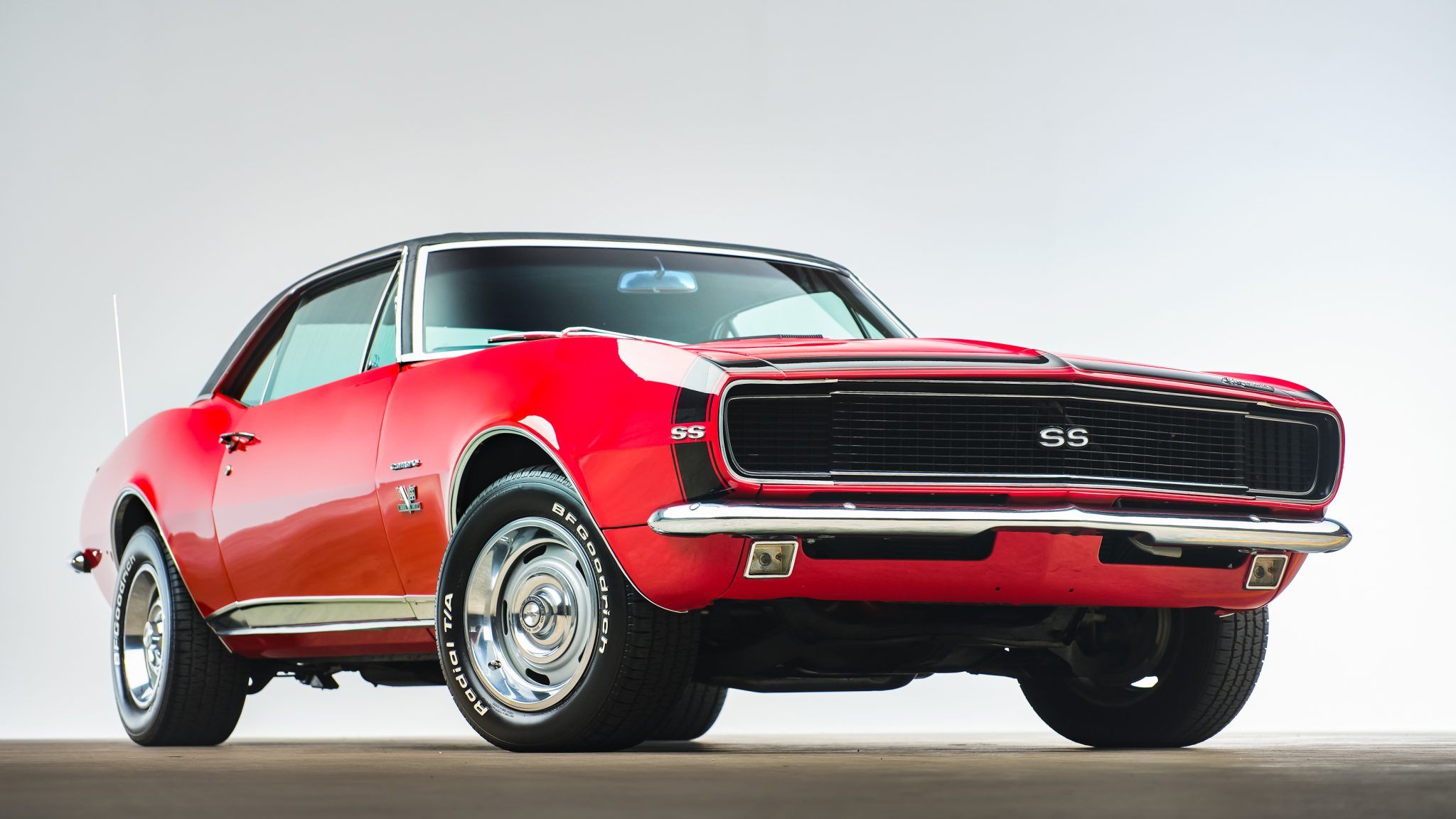
Though maybe not as popular as its progenitor, the Mustang, the Chevrolet Camaro is still a very iconic car from the ‘60s and onward. Two and a half years after the Mustang was released, Chevrolet had their answer ready, and it was a doozy: a 3,000-lb, rear-wheel drive, awesomely designed beast.
By late 1966, the muscle car era was in full swing, and the Camaro was right in the thick of it, offering big block power right from the get-go. The Camaro wouldn’t eclipse the Mustang’s sales numbers for about a decade, but that day would come…
The first generation Camaro (1967-69) was built on a GM F-body platform and was available as a two-door coupe or a convertible. It was powered either by a 3.9-, 4.1-, 4.9-, 5.0-, 5.4-, 5.7-, or 6.5-liter V8 engine. Partly due to negative press from Ralph Nader’s book calling it unsafe at any speed, Chevy realized their small compact sports car, the Corvair, wouldn’t be able to compete with the Mustang’s sales numbers, so Chevy went after the design of the Mustang and mimicked it as closely as possible. The first-generation Camaro only lasted three years, but it would inspire the design of the retro fifth-generation Camaro, too.
9 Volkswagen Beetle
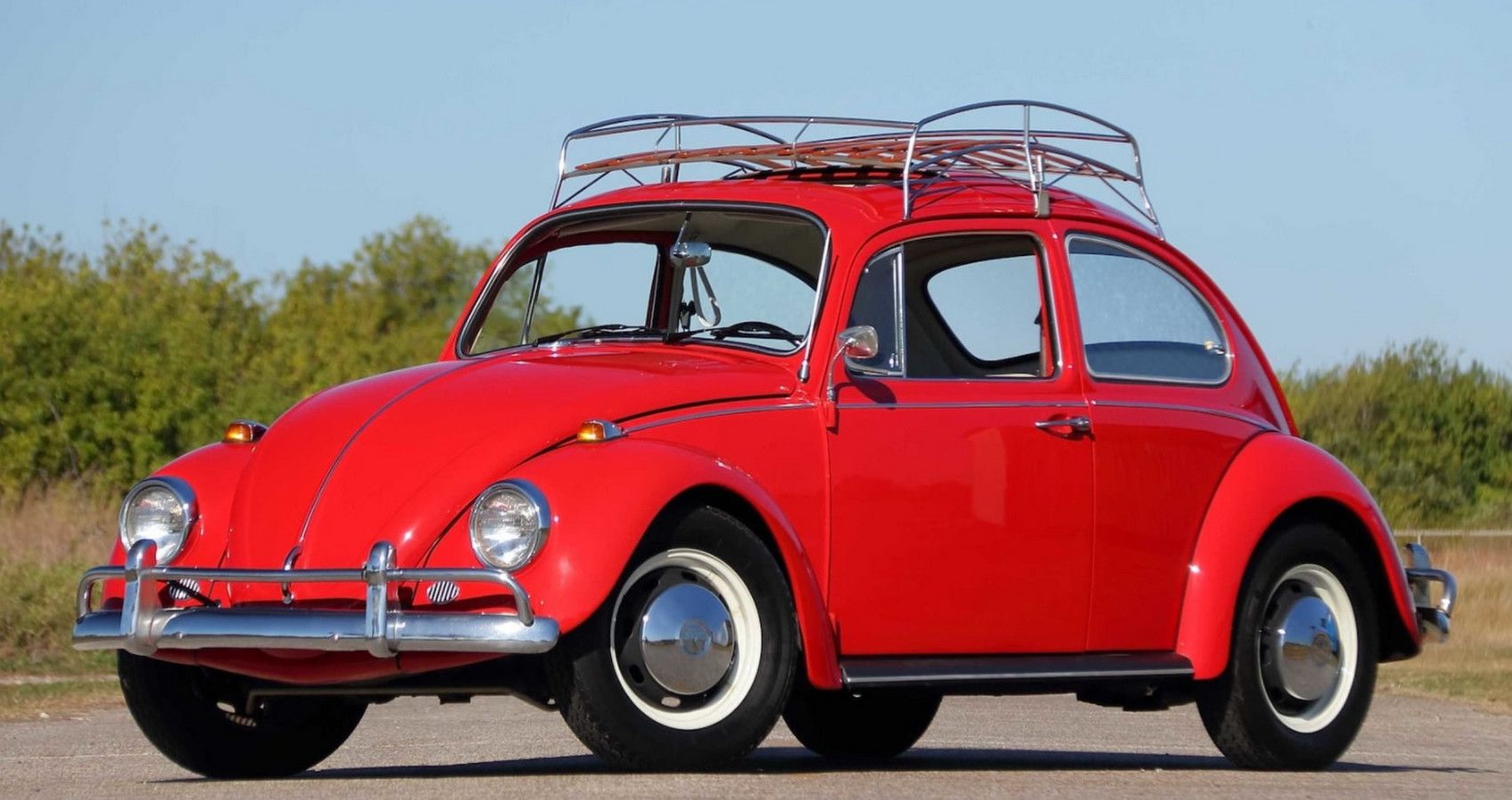
The Volkswagen Beetle has one of the longest lifespans of any car in history. It was first introduced in 1938, pre-WWII, and would go on in production until 2003. The most famous Beetle is the Type 1, and also the most popular, with over 21 million units sold. It was a small, cheap, reliable air-cooled car, and it paved the way for much more expensive German fair, like BMW and Mercedes. In the same 1999 Car of the Century poll that the Mini and Porsche 911 were part of, the Type 1 Beetle came in fourth.
The original Beetle was not going to win you any races or beauty contests: its engine only got 25 hp and was designed for a top speed of 62 mph. Autobahn speeds were increased in the postwar years, and the output was boosted to 40 hp — a configuration that lasted until 1966 and became the “classic” Volkswagen motor. Even though Volkswagen and “The People’s Car,” (a car affordable and practical enough for common people) including the company, its name, and models, were the brainchild of Adolf Hitler and Ferdinand Porsche, the idea of the car is much older than Nazism. The “People’s Car” has existed since mass-produced cars came around, and the Beetle would live on past the dark days of WWII and its creators.
8 Volkswagen Type 2

The Volkswagen Microbus (or Type 2) is kind of a funny name, depending on how you look at it: It’s either a really, really big van, or a really, really small bus (hence its name). The Type 2 was a forward control panel van introduced in 1950 by Volkswagen, but it really came into prosperity during the ‘60s, when it became the archetypal “hippie van,” and a symbol of the counterculture movement. It was the opposite of the Beetle, big rather than tiny, though it shared some similarities, including a rear-mounted air-cooled engine and rear-wheel drive.
The car remains iconic for many hippies today, thanks to its popularity in the ‘60s. Like the Beetle, it has numerous nicknames worldwide, with the “hippie van” just being one of them. The Type 2 competed with the 1947-81 Citroen H Van, the 1959-80 Renault Estafette, and the 1953-65 FR Layout Ford Transit. But as the production of the Type has been going on since 1949, and is still in production today, you can see that it outlasted all the competition. It’s still a pretty common sight on roads around the world, even though the 1964 U.S. Chicken Tax directly curtailed importation of the German-built Type 2s that qualified them as “light trucks,” or commercial vans. Sales declined in the U.S. by two-thirds from the previous year, and today the Chicken Tax still remains in effect.
7 Lincoln Continental
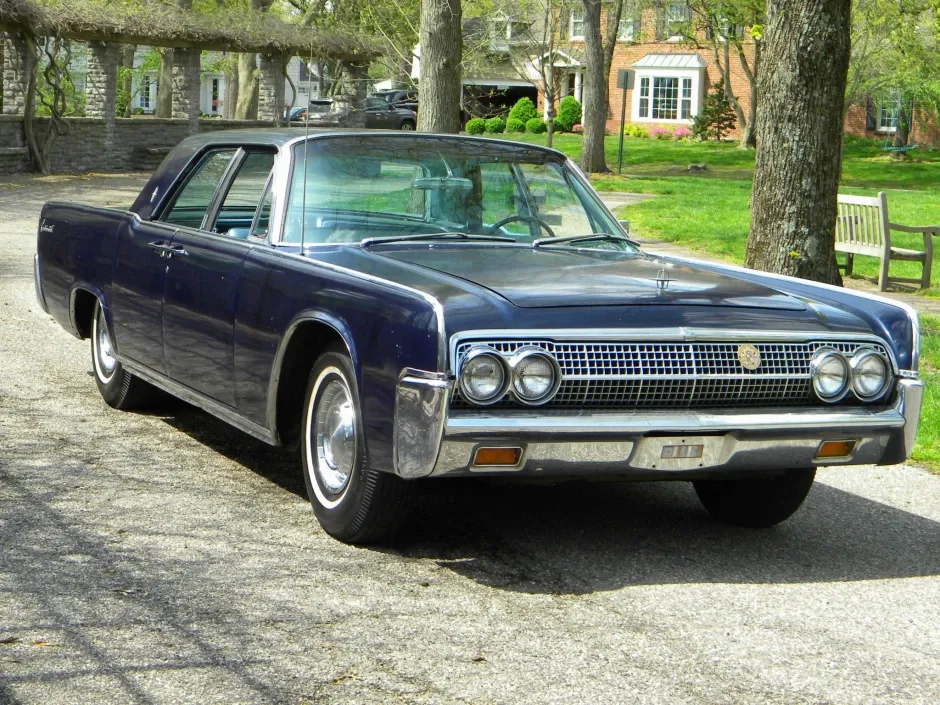
The Lincoln Continental is the only car that gives the Volkswagen Beetle a run as far as the production timeline goes. The car has been around since 1939 in its Edsel Ford prototype and then the first generation Continental, though here we’re focusing on the fourth generation (1961-69), the side-slab Continentals that became an iconic car of that period. The “new” design was completely unlike the Mark V Continentals before it, other than that both cars were huge.
The ‘60s Continental came with new, rear-hinged “suicide doors” and a luxurious interior, and it became a big seller for such an expensive car. It also had the unfortunate recognition of living in infamy after President Kennedy was assassinated in a Continental in 1963. For the 1961 model year, the entire Lincoln range was consolidated into one car. This one, even though it was 15 inches shorter than the Mark V, was still heavier and longer than its Cadillac or Imperial counterparts. Together with the rigorous post-build inspection of each vehicle, and the solid construction of the car, the Continental reflected Ford’s corporate management commitment to making the finest mass-produced domestic automobile of its time — and that reputation was achieved.
6 Plymouth Barracuda
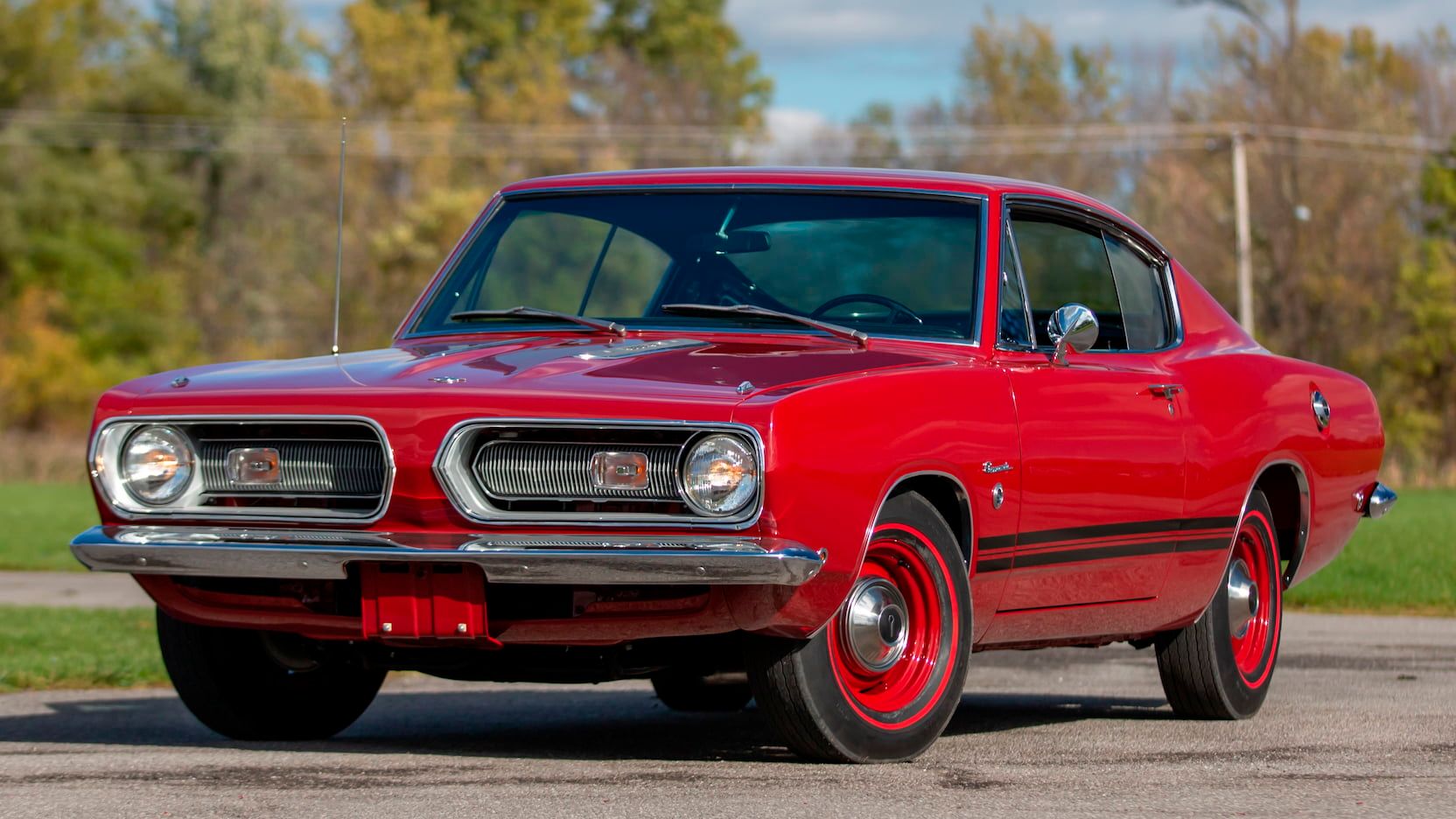
The Plymouth Barracuda was designed with the sole intention of competing against the Ford Mustang in the highly-competitive muscle car market of the ‘60s. The ‘Cuda is also one of the most expensive muscle cars selling at auction these days. The Barracuda actually launched two weeks before the Mustang, as a coupe version of the popular Plymouth Variant.
It was pretty standard except for its rear, which sported a large, distinctive wrap-around glass. The second-generation Barracuda, from 1967 to 1969, was heavily redesigned, and available as a fastback, hardtop coupe, and convertible.
The front and rear ends of the ’67 Barracuda were not the only redesigns, as the pony car class became established around this time. As such, Plymouth revised the engine options of the car, offering a range of V8 options from the two- and four-barrel versions to a big block version, and the infamous 7.0-liter Hemi engine in 1968, for the fastback Barracuda. These cars were designed by Hurst Performance to take part in Super Stock drag racing. Multiple engines were made available in 1969, including the upgraded, 330-hp 383, and a 440 Super Commando V8. The car was eventually phased out and stopped production in 1974.
5 Chevrolet Chevelle
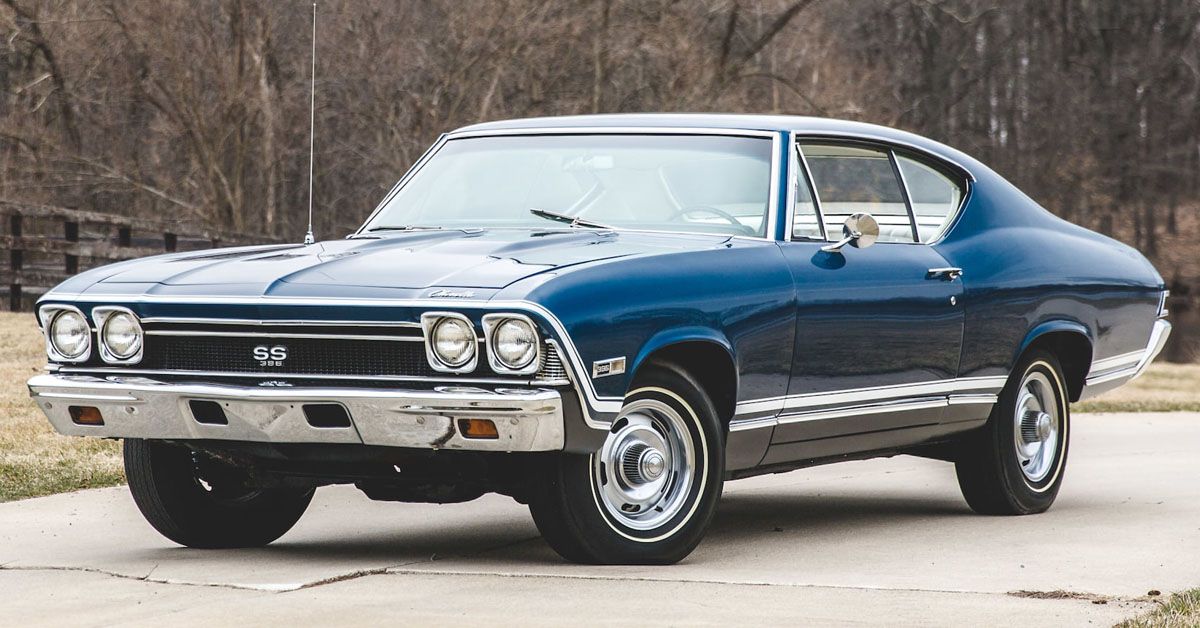
Though we’ve covered most of the well-known iconic cars that defined the ‘60s already, there were still a few that we’d be remiss not to include. The Chevrolet Chevelle is one of these. Though not as popular as the Corvette or Camaro during their heydays, the Chevelle was still a highly sought-after vehicle. It was a mid-sized car produced in three generations between 1964 and 1978.
During its time, the Chevelle was one of Chevy’s most successful nameplates. The Chevelle is a muscle car that deserves to be listed among the other top muscle cars of the day.
Even though the Chevelle peaked in 1970, with its 450-hp LS6 SS engine, the ‘60s versions weren’t slow, either. The 1964 model debuted with a lukewarm 220-hp V8, but once Pontiac released the GTO, the proverbial gloves came off, and the 327 Chevelle was added mid-year. By 1966, the 396 Chevelle was available, with well over 350 horsepower. 1966 also saw a complete restyle of the car, with a frame that now included smooth contours, a broad new grille, and bumper treatment, as well as curved side windows. With the ’67 facelift, Chevrolet claimed in the 1967 Chevelle sales brochure that, “What you’ll see inside will probably bring on a severe compulsion to go driving.”
4 Pontiac GTO
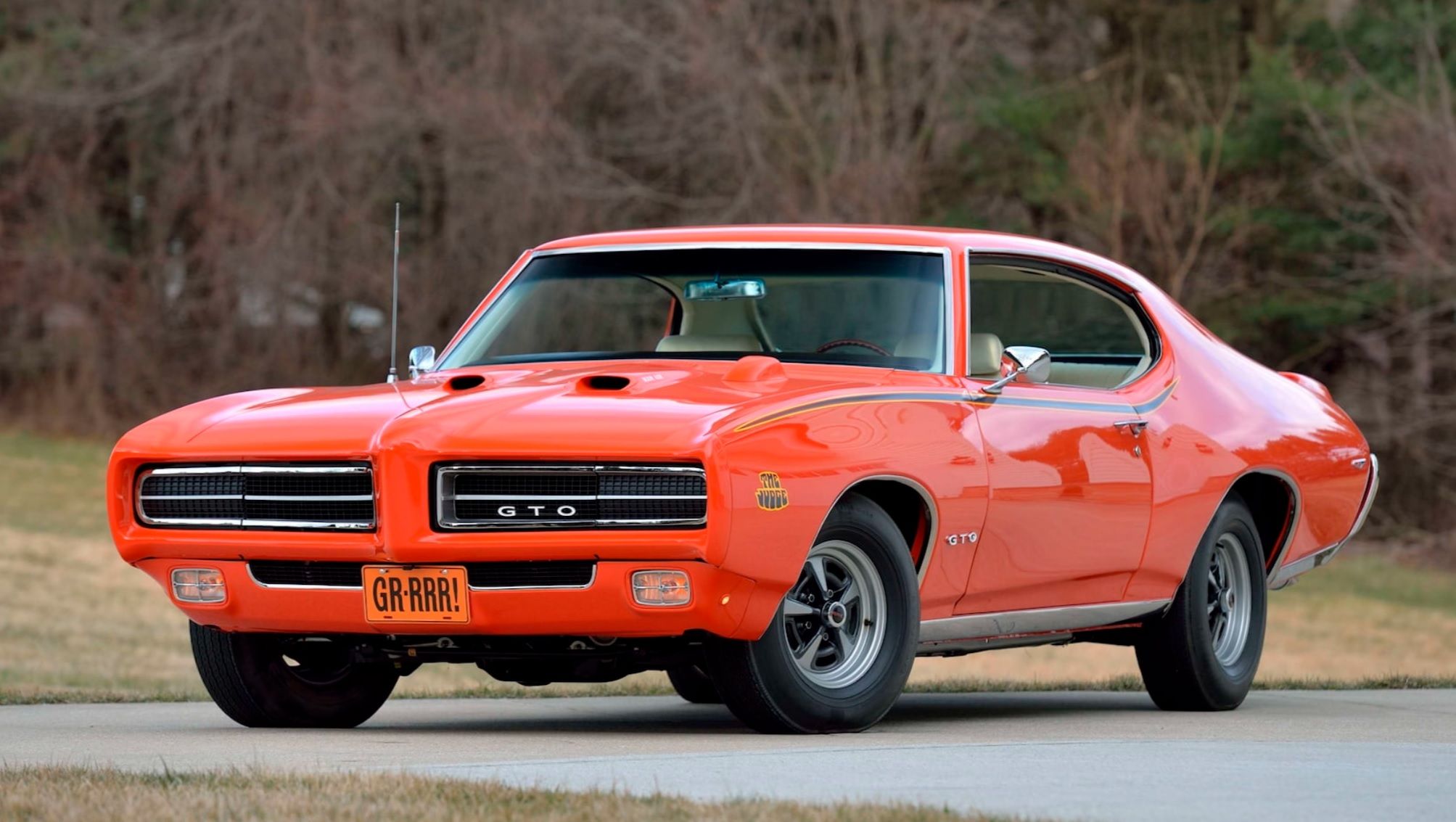
Speaking of the Pontiac GTO, here’s the car that pushed Chevrolet to make its Chevelle muscle car meaner and leaner. The Pontiac GTO was built between 1964 and 1974. Even though there were earlier muscle cars, the GTO is considered by many to have started the trend between all four domestic automakers to offer a variety of competing models. From 1964-1965, the GTO was an optional package on the mid-sized Pontiac Tempest. Then it became its own model from 1966 to 1971. It eventually became an option package again for the 1972-73 Le Mans, and for the 1974 Ventura.
From 2004 to 2006, GM’s subsidiary, Holden, revived the GTO model as a captive import for Pontiac, offering a left-hand drive version of the car as the Holden Monaro.
The GTO came about after the recent ban on factory-backed racing when Pontiac had to come up with something new to their lineup. Another ban limited mid-size vehicles to mid-size engines (330 ci or less), but Pontiac found a loophole by listing the GTO as an option (mentioned above), and featured a 325-hp 389 V8 engine, making it 100 more horsepower than cars in its class at the time, which instantly shot the GTO to legendary status.
Read Next
About The Author

:strip_icc():format(webp)/kly-media-production/medias/1564067/original/014467400_1491964869-Travel-2.jpg)

More Stories
Giant Cars Lifted With Hydraulic Car Lifts
A Famous Car Auction Offers Some Answers For United States Auto Manufacturing Woes
Advantages of the Mike Austin Golf Swing